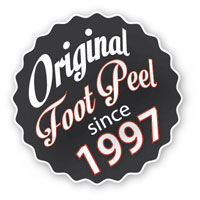Many of us find that our feet start to ache after a long day at work or at the end of a grueling workout.
In most cases, the pain may subside after a good night’s rest. At other times, the soreness may linger. It’s been estimated that 77% of Americans experience foot pain. The problem is common in people who spend long hours on their feet at work, such as nurses. Foot pain may also become more frequent as we get older or in people with certain medical conditions.
Fortunately, there are many easy things you can do to ease your feet and enjoy greater comfort. Here’s what you need to know about the causes of foot pain, what to do about it and when to check with your doctor.
Causes of Foot Pain
A number of activities can make your feet hurt, such as standing or walking for extended periods of time, especially on hard surfaces. Prolonged exercise or sports competition can also cause foot swelling and soreness.
Ill-fitting shoes are another common culprit. Shoes that are too loose or too tight can cause blisters and muscle strain. A toe box that’s too narrow can hurt your toes, and high heels can strain your Achilles tendon.
Over time, poor footwear may contribute to painful conditions like bunions, calluses and hammer toes. Other issues that cause foot pain include fallen arches or flat feet, morton’s neuroma, plantar faciitis and Achilles tendinitis.
If you are overweight or obese, excess weight may put more strain on the ligaments and joints in your feet. Arthritis, which often develops as we age, may make walking less comfortable over time. People with diabetes are at risk of painful foot problems. Finally, hormonal changes during pregnancy may weaken the ligaments in your feet and contribute to increased soreness.
At-Home Care for Foot Pain
Here are several easy ways to keep your feet comfortable and reduce pain.
Choose the Right Footwear
This is your first step on the road to happy feet.
Always wear shoes that fit comfortably and that are appropriate for the activity you’re engaged in. A good pair of shoes will have good arch support and cushioning. Wear foot pads if necessary to prevent rubbing and irritation. Your toes should have room to move around and the balls of your feet should be well supported. Wear sneakers for walking and replace them as needed.
Exercise Safely
When you exercise, always warm up and cool down. Stretch at the beginning and end of your workout. You can reduce the risk of foot injury by stretching your Achilles tendon and the bottom of your feet. If you’re a beginner, gradually increase the amount of exercise you do to let your body adjust. Maintain a healthy weight to reduce the strain on your feet and legs.
There are several exercises anyone can do that will keep your feet healthy and reduce pain. Try picking up and moving small objects with your toes. Roll the bottom of your foot on a tennis ball, golf ball or water bottle. Gently pump your ankles, moving your feet up and down. To strengthen your feet and calves, rise up on your toes, lifting your heels off the ground.
Treatments Foot Soreness at Home
If your feet are sore at the end of the day, treat yourself to a warm foot bath. Add about 1 or 2 tablespoons of epsom salts to a gallon of warm water for extra relief. Dry your feet and elevate them.
After soaking, use a pumice stone or emery board to smooth out calluses, corns and rough skin. Apply a soothing foot cream and put on socks to lock in moisture.
Perform gentle stretches to relieve pain and muscle spasms. Sit comfortably as you gently rotate your ankles and toes in a circle. Do a runners’ stretch to ease tight calf muscles.
Massage your feet to soothe irritated muscles. Gently press on sore areas, and use oil or cream if desired. Pay special attention to the plantar fascia, which is the band of muscle that runs between the ball of your foot and the heel.
If your feet are sore after a long day or exercise, apply an ice pack to relieve pain and swelling. Elevate your feet and limit activity until the pain subsides. If needed, use an over-the-counter medication like ibuprofen or acetominophen.
When to See a Doctor
Check with your doctor if you have unexplained foot pain that doesn’t subside with at-home care, if the pain gets worse or if your feet hurt more often. You should also seek medical help if you have medical conditions which could affect your feet, such as diabetes, autoimmune disorders or heart failure.
Finally, get medical attention if you experience sudden pain or suspect an injury. Signs of injury may include bleeding, bruising or difficulty putting weight on your foot. You may also notice swelling, sores, ulcers or fever.
If you’re bothered by foot pain, the good news is there are many things you can do to get relief. And if you want to get rid of rough dead skin, try Baby Foot ® Original Exfoliation Foot Peel to reveal the soft, youthful skin underneath.


